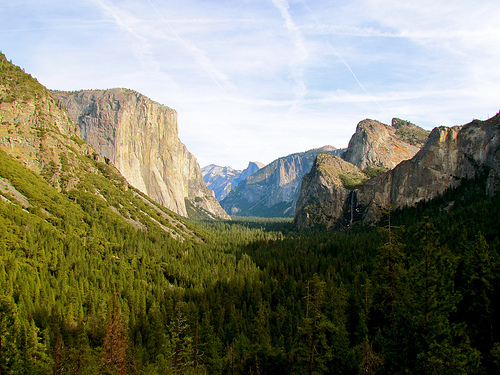
The breathtaking Yosemite National Park. From Jeff Gunn
From a surveillance device to a tool for recreation — drones have come a long way in the past couple of decades. Now, because drones have the potential to take away from wildlife and nature experiences, Yosemite National Park has banned the unmanned aircraft within the park’s limits. The public has mixed reactions to the move as the law cited for applying this regulation is still under controversy.
“The park has experienced an increase in visitors using drones within park boundaries over the last few years,” park management said in a press release.
“Drones can be extremely noisy,” the press release continues. “Drones can also impact the wilderness experience for other visitors… drones can have negative impacts on wildlife…especially sensitive nesting peregrine falcons on cliff walls.”
Drones are now unwelcome at 58 national parks. “The…regulations cited at Yosemite apply at all units of the National Park System,” says John Quincy, spokesman for the National Parks Service.
What legal basis is the park using to ban drones?
Yosemite National Park cites the Code of Federal Regulations which states “delivering or retrieving a person or object by parachute, helicopter, or other airborne means, except in emergencies involving public safety or serious property loss, or pursuant to the terms and conditions of a permit” is illegal.
However, experts say that the cited legal basis for the regulation is only for manned aircraft, and doesn’t apply to drones.
“I think it’s a questionable interpretation, frankly,” says environmental attorney Charles Warren. “The reason is the drone is not delivering or retrieving a person. I think it’s meant to apply to aircraft and gliders where people are actually in them. I think this would be difficult to uphold on a serious challenge,” he adds.
Authorities have responded to this debate on Yosemite National Park’s official Facebook page. “The drone itself is the object being delivered,” their comment reads.
Reactions to the ban
Some members of the public feel that the park should focus elsewhere. “Your buses, loud motor cycles, hundreds of campers daily, all play no effect on the park, but a device that fits in a back pack used for photography (sic) are a problem,” says Ryan Smith, on Facebook.
Others support the park’s move. “I don’t want drones taking pictures of me pooping,” says Erik Trudelle. Professional photographers suggest a compromise. “You pay for a film permit, and go through the right channels to do it. Many amateurs will end up flying these in the wrong conditions (in high wind) and end up crashing them and breaking parts all over the place, and then they won’t get the parts and leave them in the woods for others to find. It’s a recipe for a lot of hardware litter in the forests,” says Gary Wilson .
As it is now, violators face six months in jail or a $5,000 fine. The Federal Aviation Administration (FAA) is set to regulate commercial drones by 2015. In March, a judge ruled in favor of a man fined for operating a drone, saying that the FAA had not written regulations specific to drones.
Ironically, firefighters used a drone to curb a fire in the Yosemite National Park last year. Meanwhile, drone journalism is also under attack. Some view curbing domestic use of drones as being in sharp contrast to the country’s drone usage abroad, in places like Yemen.
